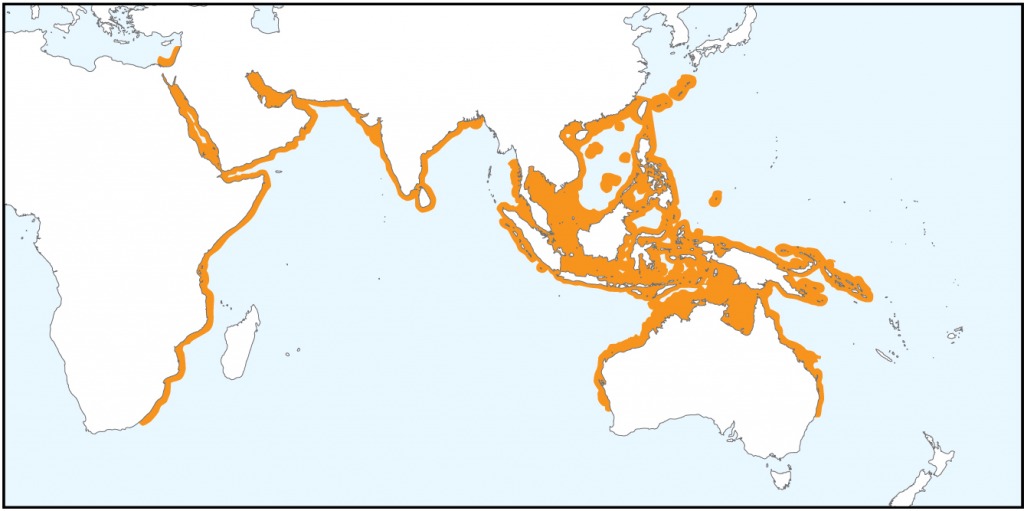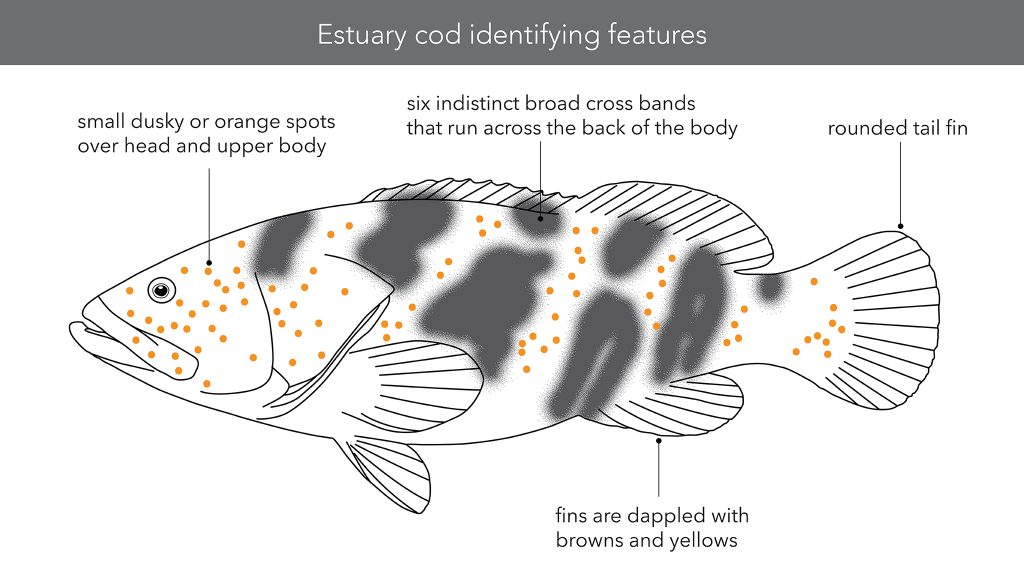Found in the tropical and warm temperate marine waters of the Indo-Pacific, many estuary cod are caught accidentally by anglers seeking mangrove jack and barramundi in creeks, or emperors over inshore reefs.
Scientific name
Epinephelus coioides
Distribution
Found in the tropical and warm temperate marine waters of the Indo-Pacific including the Persian Gulf to South Africa, India, the Philippines, Singapore, Hong Kong, Taiwan, Fiji and around numerous other islands to Australia. In Western Australia, from Shark Bay to the Northern Territory border.

Figure 1. Worldwide distribution of Estuary cod.
Ecological suite
Demersal
General description
Many estuary cod are caught accidentally by anglers seeking mangrove jack and barramundi in creeks, or emperors over inshore reefs. Very few anglers target cod intentionally. Greedy by nature, it is not unusual to find hooks, lures and bait in the gullet of this cod. Estuary cod can be solitary or form small groups, usually existing within a small home range of around 80 m. The estuary cod is another tropical species that is a protogynous hermaphrodite – that is, it exists first as female and then as a male. The major spawning period for this cod is from March to June with adults forming aggregations during this period. Whilst aggregating, the fish sleep partially buried in the mud or sand of sheltered bays. The species is considered an open water spawner with pelagic (floating) eggs.
Other names
Gold spotted rockcod, orange spotted rockcod, slimy cod
Habitat
Juveniles live in mangroves and estuaries. Mature adults migrate out of mangroves and into near shore and outer reef systems. Can be found in depths to 120 m.
Colour
Tan upper surface, shading to whitish belly with numerous small brownish orange to reddish brown spots on head and body. Fins are variegated in browns and yellows. Orange spots turn brown on exposure to air.
Size
Grows to 130 cm
Diet
Feeds on a variety of animals including fish, shrimp, cuttlefish and crab.
Exploitation
Popular in Asian cuisine, the white flaky flesh is delicately flavoured although the larger the fish, the coarser the flesh.
Caught sporadically in the commercial fishery, mainly using traps, seines, bottom set lines and by demersal fish trawlers. It is also sought by recreational fishers, including spearfishers.

